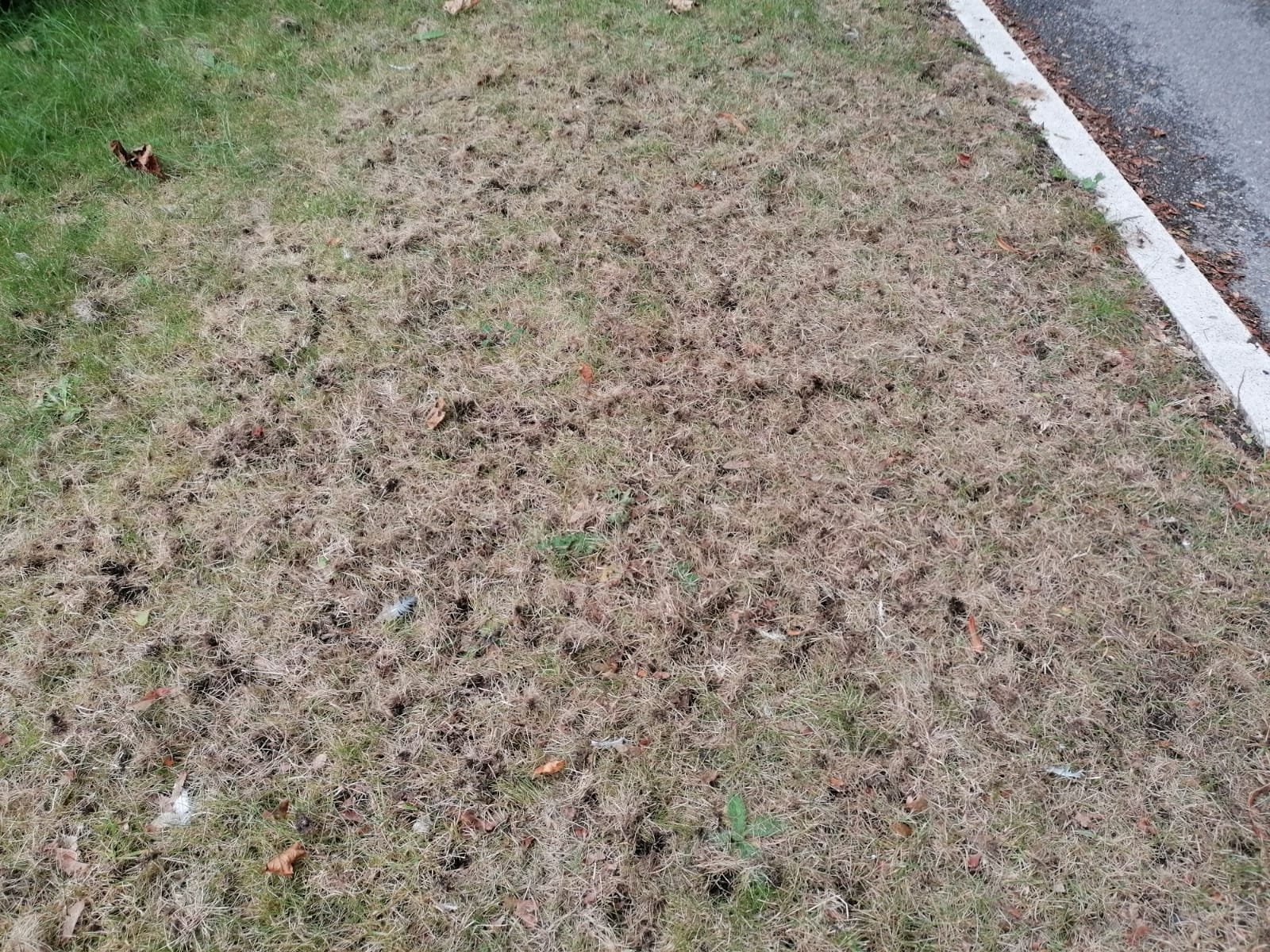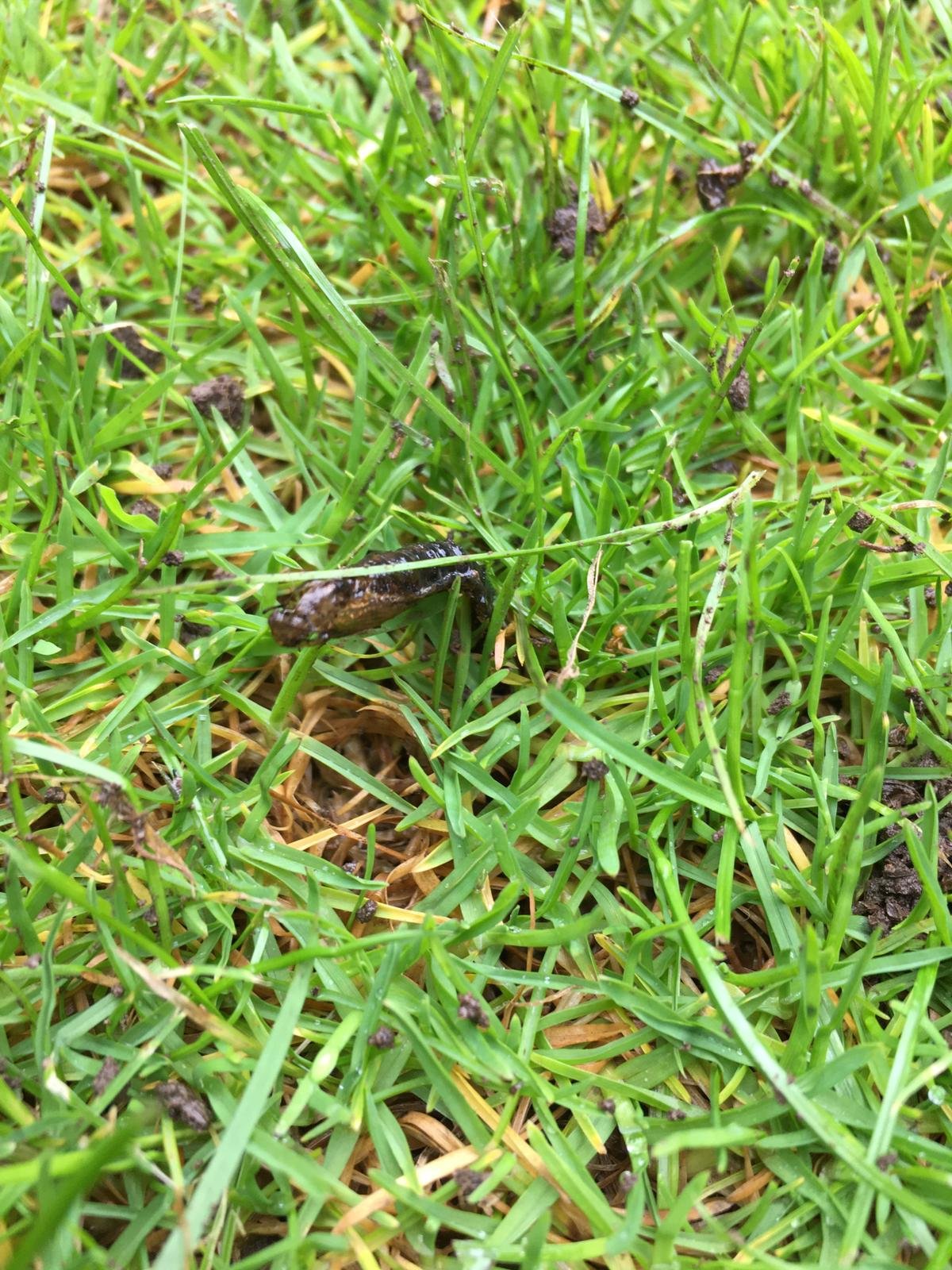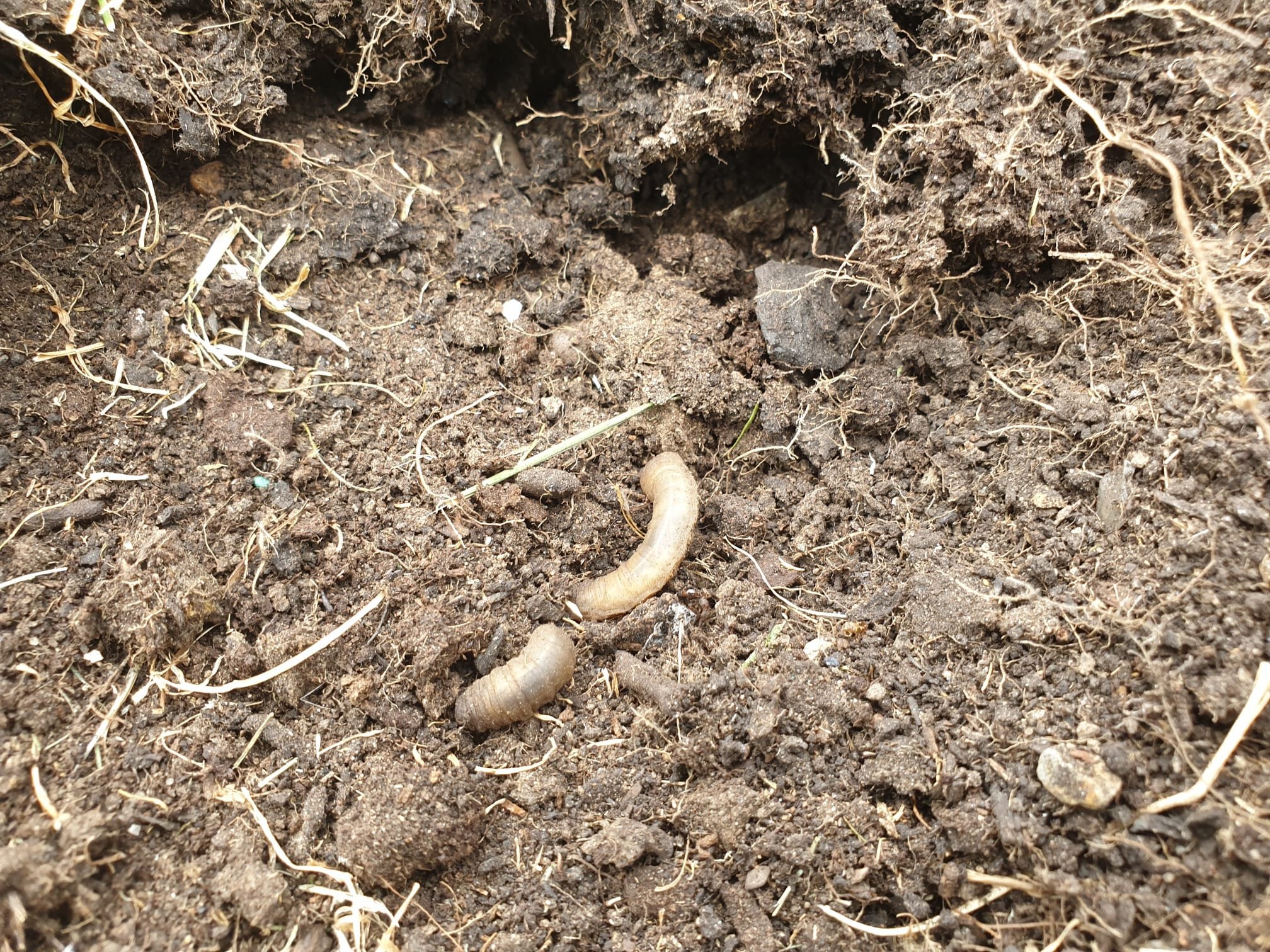Something’s eating my lawn!
Have you noticed your lawn looking like this? Have you noticed patches of your lawn looking dead? Have birds been continuously pecking at your lawn? If you have answered yes to anyone of these questions, you are highly likely to have a lawn pest infestation. These pests are highly likely to be Chafer grubs or Leather jackets.
Please do not hesitate to contact us, it is very important that the cause is identified so the correct treatment programme can be introduced .
These pests will continue to destroy your lawn if you don’t treat and control them effectively, sadly these are not easy pests to get rid of with several treatments required.
Now that we have identified the issue, you’re probably wondering; what are Chafer grubs and Leather jackets?
Chafer grubs:
Chafer grubs are are young maggot-like larvae, then they hatch into chafer beetles. Chafer beetles are commonly one of two types: The Garden Chafer and Cockchafer. The Garden Chafer has an annual life cycle whereas the Cockchafer is larger and more destructive because it lives in the soil for 3 years, eating roots before it hatches. They live near the soil surface and will only burrow deeper once Autumn temperatures start to drop.
The Adult Chafer beetle lays eggs in the soil around July, with the grubs hatching and eating through the lawn roots during the Summer and early Autumn. As soil temperature drops, the Grubs will burrow deeper into the soil to stay warm, resurfacing in Spring to undo all the hard work put in over the Winter and early Spring, they are relentless until they fully mature to Chafer beetles in May / June.
Further damage to lawns is caused by crows, foxes and badgers who tear up the grass to look for these grubs during the months when the grubs are active.
Leather jackets:
Leather jacket grubs are juvenile “Daddy Long Legs” or “Crane Flies” – there are hundreds of varieties, but it should be noted they ultimately all do the same thing… eat the lawn roots.
Look out for patches of yellowish or brown lawn. By lifting up the turf you are likely to find leather jackets, Spring is where immense damage can be caused to your lawn, but treatment is unlikely to help with the problem at this stage.
When fully grown, the leather jackets grubs pupate in the soil. When the adult crane fly emerges, the pupal case is often partly pulled out of the ground and left sticking up above the lawn surface.
Crows, magpies, rooks and starlings will actively hunt for leather jackets in turf. These birds can leave small round holes in the turf where they have inserted their beaks. These birds can also search out for chafer grubs in a similar way.
Generally, the adult crane flies or daddy-longlegs actively lay eggs in the soil surface from August to October. The eggs hatch a few weeks after they have been laid and these young leather jackets start to feed on plant roots as long as conditions are mild enough.
How can I treat this?
Treating these pests can be difficult and certainly time consuming, but this is where we are here to help.
There are currently two methods which will help to control leather jackets and Chafer grubs, Nematodes and the recently licensed pesticide Acelepryn.
Utilising nematodes the pests will gradually decrease in numbers and begin to become under control. Nematodes are parasitic and hunt out and attack the adult larvae. It is important to identify the pest to apply the correct nematode treatment.
Timing of application is vital as is watering the lawn is vital to keep the nematodes alive.
Acelepryn is viewed as a game changer within the industry. The pesticide is applied twice yearly and targets the newly hatched and very young larvae. As Nematodes this is a control method so we advise that the Acelepryn is applied twice yearly for 2-3 years.
Acelepryn is safe to apply and is not harmful to the wildlife predators hunting out leather jackets and Chafer grubs, another huge advantage is that the treatment targets both pests.
We have decided that the pesticide is the preferred control method and we are seeing promising results.
Please fill out the contact form below including your home address, let us take the stress out of controlling these pests for you.







